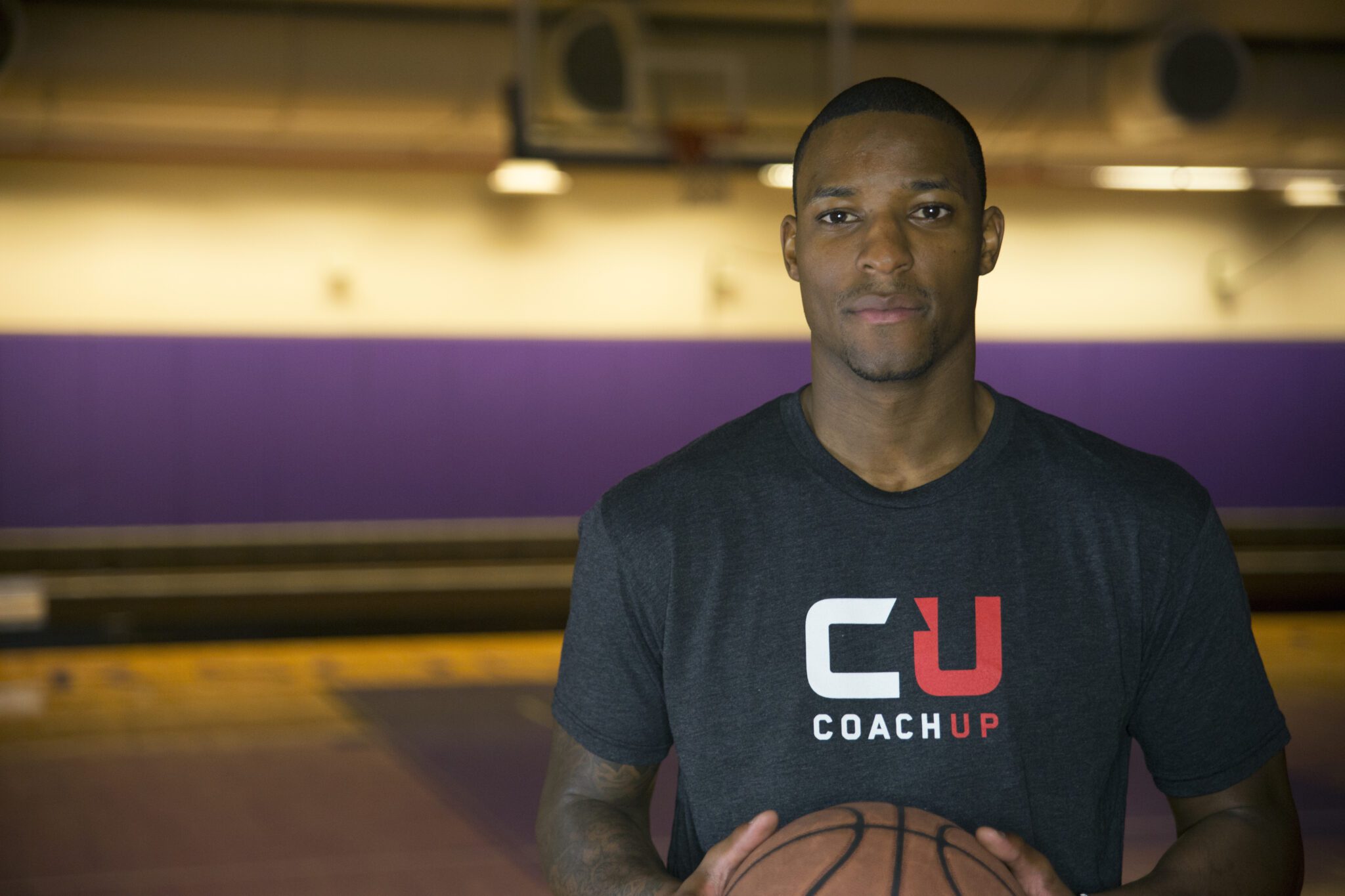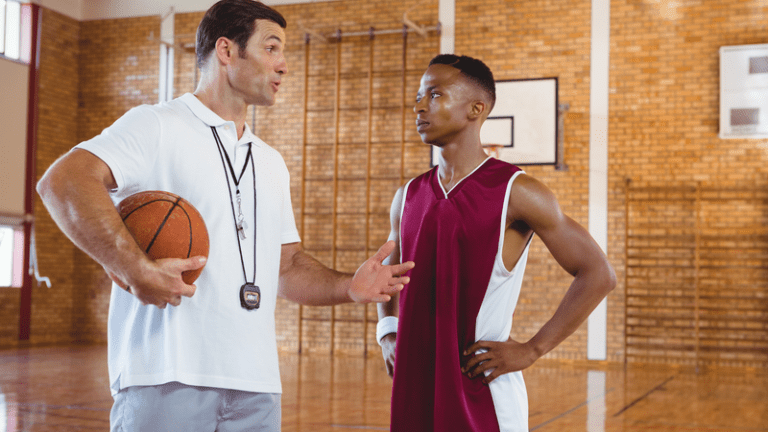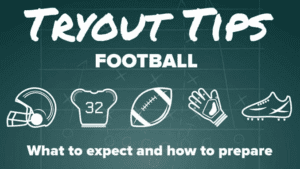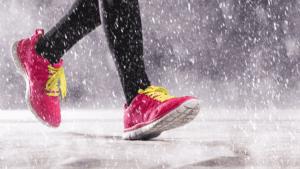Let me first start off by saying this article is not to bash the Amateur Athletic Union (AAU) or to imply that AAU has not helped thousands, if not millions of athletes around the world become better players, travel the world, build lasting relationships, and for many to realize their college dreams. There are plenty of excellent AAU programs and coaches around the world who have done a whole lot for the sport of basketball and helping the student athlete in general.
This article is meant to enlighten parents on how valuable and prevalent one-on-one basketball training is to the modern-day athlete.
AAU is considered the gold standard of basketball development, and I want to show how one-on-one training has taken over the top spot as the way to develop the young player. Here is my list of 10 reasons why one-on-one basketball training trumps AAU every time!
1. You Get More Bang for Your Buck
AAU
It takes time and strategy to build each player’s body, and on top of that, to increase each player’s skill set. Coaches will try their best to develop all their players but unfortunately most of them will not reach their potential. The coaches are not able to spend the amount of time it would take to develop each and every player on their team.
AAU basketball practices are mostly held 2-3 days a week for 1-2 hours each. Most teams spend their practice time working on plays for offense and defense. Some teams will spend a considerate amount of time on skill training or strength and conditioning, but rarely do they focus on both. If AAU teams spend their practice time working on team-oriented goals along with skill training and strength and conditioning, they would need at least an additional 2-3 hours of practice time.
Prices to play can be upwards of $500 to over $5,000 for one AAU season. These costs go towards the child’s travel, uniforms, and tournament fees. These costs do not include transportation to and from practice or games, hotel rooms, food, gas or admission for the family into the tournaments. Admission prices range from $5-20 for per person.
It’s well known that unless you are one of the very best basketball players in your area, you will have to pay to play AAU. Yes, some of the best players do play for free, while most others have to pay. The coach can value a player enough that the player may play for free. However, for the majority of parents who kids play AAU, the financial burden can be pretty daunting.
One-on-one basketball training provides the player a personal coach that will build a workout program to maximize the player’s highest potential!
Private Training
One-on-one basketball training prices range from $20-100 per 60-75-minute session 2-3 times a week. After discussing the player’s basketball goals, the trainer will take the first initial session which is often complimentary to test the player’s skill set, strength levels, and conditioning. The trainer may also take body measurements such as height and weight. After the initial session, the trainer will create an individual workout program based on the data collected and go over that program with the player and player’s parents.
Workout programs can vary in length from 8 weeks to 16 weeks or even longer. The length of the program may depend on the player’s goals and the parent’s budget. A 16-week program at two sessions a week would be a total of 32 sessions. At $30 per session, you would be paying just $960 for 16 weeks of intense personal training!
Most basic workout programs are a combination of athletic and skill training. These programs will focus on footwork, quickness, agility, and vertical leap along with ball handling, shooting, passing, defense, positioning, etc.
Training sessions are usually held at the local fitness gyms, schools, parks, colleges, or the player’s home. If a player has a basketball rim and decent size court in the yard or driveway, the basketball trainer will train them right at their own home.
2. How Each Approach Affects Athlete Level
The main goal for a majority of AAU programs is for team success. Team success can lead to notoriety, trophies, and/or sponsorships. And although, I’m sure some of these programs really do care for each individual player, the program is built for team success and that’s the number one goal.
A young player can be the star player or an average player, either way the player has to consistently develop their individual game in order to compete with other developing players. When it comes to one-on-one training, the player’s individual goals are a priority and the main goal is for the player to become an elite athlete. The trainer knows in order to get more clients and to make a living, there has to be proof that the training program works.
The trainer is heavily invested with each player to make sure that the player reaches his/her full potential.
The trainer will create a program tailored toward each individual player, therefore the trainer will study and analyze the player’s body and skill level so that each individual workout program is not only geared for skill set, but for the player to become an elite athlete.
3. Personalized Strength and Conditioning Workouts
AAU teams have practices very similar to school teams. In addition to working on the playbook, they do plenty of conditioning drills and some even have weight lifting programs. These practices can be very effective, except for the issue that everything done is based on averages.
Each player will not have a personal workout plan, instead all workouts will be based on the overall capabilities and strength of the entire team. Basically, the player will do the exact same workout as the rest of the team regardless of their individual strength or body type.
One-on-one trainers know that every player is different. Each player’s body and strength level is not identical. One player can have a higher one rep maximum lift than the next player, which is a determinate of the amount of weight and reps a player should do. Other players may be able to take in more oxygen during exercise, or another player may have more fast twitch muscles (your most powerful muscles) which would make that player more explosive or stronger. There are a variety of things to consider when training a player. It’s not just go out there and do a bunch of exercises. There is a method and plan on how to train each player based on their age, gender, body, strength, genetics, etc.
The ability to train each player with a personalized workout program is a definite advantage for the one-on-one trainer.
4. Time to Improve Your Weaknesses
Every young basketball player will have weaknesses in their game that they will want to improve. The time to improve those weaknesses would be at your team’s practice or your own individual workout. AAU coaches will tell you what your weaknesses are and will even help you to improve them. However, the coach will not have adequate time it will take to improve the weaknesses of every player at a given practice. It’s unrealistic to expect this from an AAU coach, as this coach has a whole team to work with and to prepare for their next tournament.
The one-on-one trainer will talk extensively with every player about his or her strengths and weaknesses and how to improve their game. The trainer will even attend some games directly or go over videos of games or practices provided by the player and give feedback on the player’s performance. This type of feedback is invaluable as the trainer gets to see exactly how the player is performing on the court and therefore can communicate to the player what to improve on. The player gets honest feedback and an actual workout plan for improvement.
5. More Shots Taken
One-on-one basketball trainers will take advantage of the internet for websites like YouTube to study great shooters and their most effective shooting drills. They will then find ways to implement these drills during their sessions with their players. Most players will shoot anywhere from 400-500 shots per training session. The trainer ensures that the shots being taken are game situation shots and are being taken with correct shooting form.
Training sessions with a one-on-one trainer are all about repetition. No matter if you are working on a certain skill such as shooting or doing explosive drills to increase your vertical jump, there will be a strong emphasis on repetition.
Each repetition is a building block for what you are trying to accomplish. If you want to be a good basketball player in today’s game, you must be able to shoot the ball accurately and consistently. You must practice a lot on your shot. Practice will only bring good results through repetition.
On average during a typical AAU practice, which is 2-3 times a week, a player will take anywhere from 50-75 shots. If you count in a 3-day tournament for the same week, the player may take an additional 50 shots depending on playing time. So basically, each player averages 150-200 shots per week combining AAU practice and games. The amount of shots taken are not nearly enough for the average player to gain accuracy as a shooter.
According to research, elite basketball players (college or pros) take up to 300 shots per basketball training session at least 3-4 times a week. The total of shots taken can range from 900-1200 shots per week. These jumps shots, floater shots, hook shots, etc., are all shots these players would take in a real game. Each shot is practiced to help build consistency with shooting form and muscle memory.
6. Basketball Fundamentals
The basic fundamentals of the game should be learned by every aspiring basketball player. These fundamentals must be practiced thousands of times in order to master them. A list of these fundamentals includes the following:
- Rules of the game (scoring, fouls, violations)
- Teamwork
- Shooting form and release
- Dribbling and ball handling
- Passing
- Defense
- Laying the ball up while jumping off the correct leg
- Foul Shooting.
- Triple threat position and pivoting.
- Footwork (first step, jab step, etc.)
Although there are many more fundamentals we could list, these are some basic ones that a beginner can use. These fundamentals will only give you a starting point, because as you advance in play and get accustomed to the game, you will need to learn additional fundamentals.
AAU coaches will teach a lot of these fundamentals and take out the time to practice on them. But again, these practices will be based on the average skill level and not the individual.
Some young players learn differently than others, and it will take more time and maybe even a different strategy to teach one kid the same thing.
An example of a different strategy could be having the player walk through a drill many times before speeding them up. Or having the player watch themselves on video before making adjustments. Other players may be more visual and the coach will personally have to show them how to do certain things.
If player is lacking a basic fundamental, the trainer will spend additional time and effort working on it. There is no rush or pressure for the young player to learn something in a given time, but there is an expectation from the trainer that the player will work hard on getting better and to practice the correct way.
The one-on-one basketball trainer is well aware of the importance of fundamentals in developing a player’s game. This is actually the essence for each workout program created. The workout program is built for levels of advancement, therefore, the player cannot advance in skill without mastering each of the basic fundamentals. Training sessions are meant for the player to get better each session.
Fundamentals are the foundation from which every player will develop their game.
- Shooting: include proper foot alignment, leg bend, hand position, arm angle, follow through, and so on.
- Ball Handling: dribbling with your fingertips, keeping your head up while dribbling, or not dribbling too high.
- Defense:
- The correct defensive stance where your knees are bent, back is straight and arms are out.
- Learn how to slide your feet without letting your feet cross.
- How to change directions when sliding your feet while guarding another player.
- Guarding the pick and roll.
- Guarding a post player
- Different types of defenses (man to man, zone, half court or full court trap)
It doesn’t matter if it is a young player learning the basic fundamentals or an older player, the initial basketball lessons are crucial to the player’s development. As the player gets older, bigger, and more athletic, the player will get more creative on the court and will try new things. This is perfectly fine and normal as long as the player’s improved game is in alignment with their fundamentals. An example of this would be when a player gets strong and confident enough to start taking long range jump shots.
The player cannot change their shooting fundamentals because they are now taking longer range shots. If the player does not shoot with the same shooting fundamentals that were learned from the shorter range, the player must make adjustments in order to keep taking that shot. The trainer will work with the player on how to be consistent on their shot by shooting with the same fundamentals that was learned from the beginning. This is how a young player will get better and develop their game by constantly improving their basketball fundamentals.
7. Prioritizing Education
According to scores from the (PISA) Test, one of the biggest cross-national tests that measures reading ability, math and science, literacy and other key skills among 15-year-olds in dozens of developed and developing countries, U.S. students continue to rank around the middle of the pack, and behind many other advanced industrial nations. This phenomenon does not help the student athlete who has to past the ACT (national test for college entry) and be prepared for college courses. In any event, parents may want to have their children spend more time on education and invest in different tools to help with learning. Parents can push the child to read more books, acquire tutors or enter academic camps and competitions.
Student athletes who play AAU basketball have to have a healthy balance between school and their team’s requirements. There may and may not be much practice time, however, the amount of time spent on the weekends for tournaments is substantial. A player may spend the entire weekend (Friday through Sunday) at a given tournament, with very little if any time spent on education. This cycle may last for many months through spring and summer depending on the AAU schedule. The amount of time spent playing AAU is in direct conflict with the need to prioritize education. Any player can be good at a sport, but it won’t help the player if the player doesn’t have passing grades or test scores.
One of the benefits of having a one-on-one basketball trainer is that you can choose your own schedule by making appointments with the trainer.
The amount of time spent on training is at your discretion. If available, the player can train multiple days a week or just 1-2 days. The number of sessions a player goes through during the course of a week depends on both the player and trainer’s availability and the player’s budget. There will still be plenty of time during the week and on weekends for the player to enhance their education. The trainer actually encourages the player to take advantage of this and to spend more time reading books and learning new things.
8. Healthy Lifestyle Choices
An added benefit of working with a one-on-one basketball trainer is that many of these trainers are also certified personal trainers. They are very knowledgeable about personal fitness along with other healthy lifestyle choices. These trainers can teach the player the correct way to exercise, breath correctly, stabilize their core, stretch muscles, in addition to suggestions for healthy eating habits and nutrition. The one-on-one trainer does not only train the player for basketball but for activities for everyday living as well.
Trainers try to help their players choose an active lifestyle that they can follow their entire lives. As players get older they start to discover different things with their body in regards to their athletic ability, cardio endurance, strength and so forth. This is a very crucial time because now these players are cognizant of how working out affects their body. The one-on-one trainer can discuss with players’ different ways to monitor their body and how to increase their intensity when training.
9. Convenience
The travel to and from AAU practices in conjunction with weekend tournaments can be a huge inconvenience to the player’s parents. Practices are usually held in a location that’s central to the majority of players. If the player plays with a team that is located out of their state or county, the player has to travel some distance for practice and for tournaments. This can cause a huge strain on the working parent or parents with more children. If the player is not old enough to drive, it is the parent’s responsibility to make sure the player makes it to all of their AAU engagements.
With a one-on-one basketball trainer, sessions can be held at a variety of places. If the player owns a local gym membership, the training sessions can take place there. The trainer will seek an arrangement with the gym owner or management to either buy a gym membership or purchase day passes with permission to train one of their members. Other options for training locations are local schools, colleges, nearby parks, the player’s home, and online training programs. Most trainers will accommodate the player by training at the player’s preferred location. Trainers may also provide nutritional tips and suggestions for healthy eating habits.
The biggest growing trend for one-on-one basketball training is the adoption of online training.
Online basketball training can connect the player with their favorite trainers from all parts of the world.
Trainers can now reach clients from all over the US and abroad. A player can acquire online training programs right from their smart phone or computer. Training programs are sent via email or text message. There are options to use live video streaming such as FaceTime or Skype where the player can work directly with the trainer virtually. The player may be required to take videos of their practice sessions and to send it to the trainer. The trainer will go over the video with the player and discuss what they are doing right or wrong and how to improve. Some basketball trainers will have the player keep a journal of all of their sessions. The journal will keep track of the player’s progress, such as how many calf raises done in one session to the amount of jumps shots taken or the shooting percentage from certain spots on the court. The possibilities for increased production through online training are endless.
Many young players from around the world will try online basketball training and discover the glowing benefits from it. They can try it on their own or enlist friends and have group sessions. This new way of training is another aspect for the evolution of one-on-one basketball training and trainers will continue to use innovative ways to develop these players.
10. Playing Other Sports
According to the NCAA, senior high school athletes have a 3.1% chance (less than 1 in 35) to land a scholarship to play college basketball. The majority of athletes who play basketball for their perspective school teams or AAU teams have hopes of playing college basketball. However, as just mentioned, the probability for the athlete to be awarded a scholarship is very low.
There are many other sports to play in high school and some of them have a higher probability to get a scholarship. For boys, sports such as ice hockey (11.9%), Lacrosse (12.4%), or girls swimming (7.4%) or ice hockey (24.5%) have substantial higher percentages for athletes to acquire college scholarships.
If the student athlete’s goal is to go to college and/or play a college sport, then the athlete will want to consider playing more than one sport.
Even if you don’t get a scholarship for your preferred sport, you will still get the chance to earn a college degree while playing a college sport. There are tryouts for every sport, so there is a chance the athlete can walk on for their preferred sport if their schedule permits.
One-on-one basketball trainers are well aware of the difficulties of getting a basketball scholarship. And the trainers take this into consideration when working with a player. The trainer’s goal is to not only improve the player’s basketball skill but to prepare the player for any future sport the player may choose. This is why most basketball trainers place a large focus on strength and conditioning and the overall building of the player’s body. The player will get bigger, stronger, powerful, and more agile which will help the player in any sport chosen.
AAU basketball programs are meant for the player to excel in basketball and there is hardly any time spent on playing another sport. The player may feel that basketball is their only option for participating in a college sport. Therefore, it’s the duty of every basketball trainer and AAU coach to encourage all players to try other sports.
Conclusion
In conclusion, there are several benefits to playing AAU, but it pales in comparison to the possibilities that can be attained with a one-on-one trainer. The trainer has the clear-cut advantage of training each player individually. This individual training is a game changer and is helping many players around the world. Players are realizing the benefits of one-on-one training and most players are eager to go this route. They are seeing many of their peers who have one-on-one trainers improve dramatically. Their peers game speaks for itself along with the showing of improved agility, quickness, power, and explosiveness.
One-on-one basketball training for the youth is currently in its infancy but it will only continue to grow as more players lessen their AAU participation and focus more on working with a personal coach!
Coach Dell J
www.coachup.com/coaches/dellj
Instagram- Coachdellj4488
Twitter- @DellJCoachUp
CoachUp is the safest and easiest way to find a coach for personalized training. With our 100% money-back guarantee and vetted coaches, anyone can achieve their full athletic potential. Find your perfect coach today and become the athlete you want to be!
How useful was this post?
Click on a star to rate it!
Average rating 5 / 5. Vote count: 10
No votes so far! Be the first to rate this post.




3 Responses
I agree with this article 100%. Working with a personal trainer 2 to 3 times a week will make all of the difference in the development of a young teenager’s skills, confidence, and overall athletic performance. Personal training is definitely the way to go.
I agree with the premise of 1 on 1 coaching. The opportunity to get a scholarship shocked me. You provided statistics for several sports but did not include football. What are the chances there?
IMy grandson is 13 he would love fo him to play basketball, but I don’t have the money to hire Personal trainer. How do I go about fundraising to help my grandson?